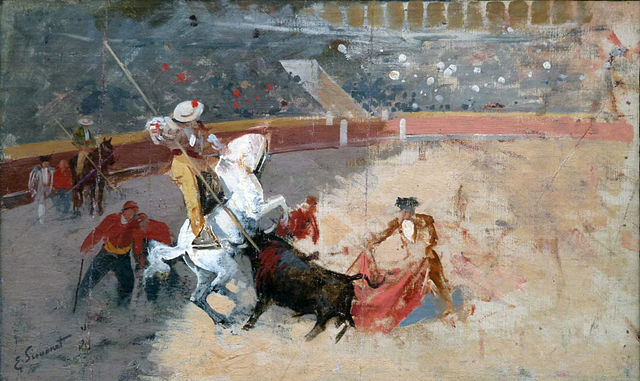Portuguese-style bullfighting
Portuguese-style bullfighting differs in many aspects from Spanish-style bullfighting, most notably in the fact that the bull is not killed in front of an audience in the arena. The cavaleiros and the forcados are unique to the Portuguese variety of bullfighting, as well as the participation of horsewomen (cavaleiras) in the routines.
Cavaleiro and bull
Pega de caras
Spanish-style bullfighting
Spanish-style bullfighting is a type of bullfighting that is practiced in Spanish-speaking countries: Spain, Mexico, Colombia, Ecuador, Venezuela, Peru, as well as in parts of southern France and Portugal. This style of bullfighting involves a physical contest with humans attempting to publicly subdue, immobilize, or kill a bull. The most common bull used is the Spanish Fighting Bull, a type of cattle native to the Iberian Peninsula. This style of bullfighting is seen to be both a sport and performance art. The red colour of the cape is a matter of tradition – bulls are color blind. They attack moving objects; the brightly-colored cape is used to mask blood stains.
A Spanish-style bullfight in the Plaza de toros de La Malagueta in Málaga, Spain, 2018.
El Cid Campeador lanceando otro toro by Francisco Goya, 1816
Enrique Simonet's La suerte de varas (1899) depicts Spanish-style bullfighting in a bullring in Madrid, Spain. The painting illustrates the first-stage of this type of bullfighting.
The capote (cloak) waved in front of the bull, 2005.






